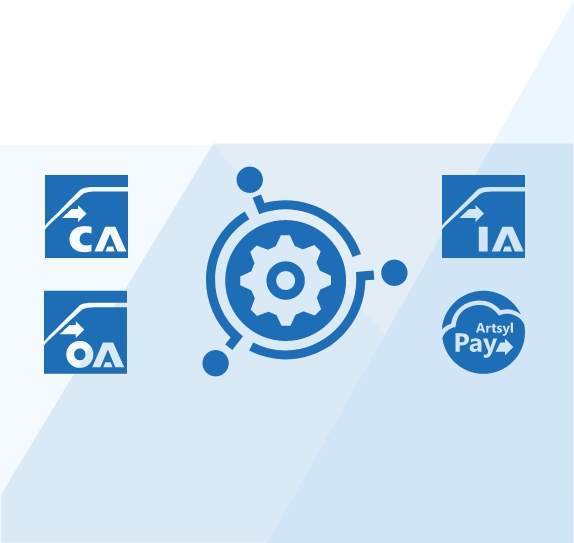In today’s data-driven world, businesses are constantly bombarded with information. From customer interactions and sales figures to marketing campaign performance and social media trends, the sheer volume of data can be overwhelming.
But what if there was a way to harness this data and transform it into actionable insights that drive better decision-making? Enter Business Intelligence (BI) platforms.
BI platforms are not magic wands, but rather powerful business intelligence tools that can empower businesses to unlock the hidden potential within their data.
Imagine a centralized hub where you can gather, analyze, and visualize all your crucial business information. BI platforms do just that, providing a user-friendly interface to explore trends, identify patterns, and gain a deeper understanding of your customers, operations, and overall business health. In this article, we will describe:
This article will equip you with the knowledge to harness the power of data for informed decision-making.

Integrate docAlpha with your business intelligence platform to transform raw data into actionable insights.
Experience seamless data extraction, processing, and analysis for more informed decision-making. Learn how docAlpha can enhance your BI capabilities.
What if you could transform this data into actionable insights that fuel smarter decisions? That’s where Business Intelligence (BI) platforms come in.
Think of BI platforms as data command centers. They empower you to gather, analyze, and visualize all your crucial business information in one user-friendly interface. This lets you explore trends, identify patterns, and gain a deeper understanding of your customers, operations, and overall business health. Here’s a breakdown of how BI platforms work their magic.
Collect Data in BI Platforms
BI platforms can connect to a variety of data sources, including databases, spreadsheets, customer relationship management (CRM) systems, and marketing automation tools.
This allows them to pull in all your relevant data, creating a centralized repository for analysis.
READ MORE: Interactions Between Business Intelligence and ERP Systems
Clean and Transform Data
Raw data often comes in messy formats. BI platforms can clean and transform this data, ensuring consistency and accuracy before analysis. This might involve handling missing values, correcting inconsistencies, and standardizing formats.
Analyze and Explore Data BI Platforms
BI platforms offer powerful tools for analyzing the transformed data. Users can leverage these tools to answer specific business questions and gain insights that would be difficult to glean from raw data alone. We will describe them in detail later.
Visualize Data with BI Platforms
BI platforms excel at presenting complex data in easily digestible formats. They offer a variety of charts, graphs, dashboards, and reports that make data readily understandable, even for non-technical users. Visualizations help identify trends, outliers, and relationships at a glance.
Collaborate and Share in BI Platforms
BI platforms facilitate collaboration by allowing users to share insights and reports with colleagues. This fosters data-driven decision-making across the organization. Users can create customized dashboards and reports tailored to specific departments or roles.
Overall, BI platforms act as a bridge between raw data and actionable insights. They empower businesses to transform their data into a strategic asset, leading to better decision-making, improved performance, and a competitive edge.
Boost your data management efficiency by integrating docAlpha with your BI tools. Automate data capture and streamline your workflow, allowing you to focus on strategic analysis rather than manual data entry. Discover the automation power of docAlpha.
Book a demo now
Business Intelligence (BI) platforms go beyond simple data storage. They offer a comprehensive suite of functionalities designed to unlock the true potential of your data. Here’s a closer look at some key features.
Data Integration in BI Platforms
BI platforms can connect to a wide range of data sources, acting as a central hub for all your business information. This includes databases, spreadsheets, marketing automation tools, CRM systems, and even social media platforms.
Data Cleaning and Transformation
BI platforms offer tools to clean and transform this data, ensuring consistency and accuracy before analysis. This might involve handling missing values, correcting inconsistencies, and standardizing formats.
Data Analysis and Exploration
BI platforms provide powerful tools for in-depth data exploration. This includes features like:
- Data Mining: Unearthing hidden patterns and relationships within your data that might not be readily apparent.
- Trend Analysis: Identifying changes and patterns over time to understand customer behavior, market fluctuations, or sales trends.
- Comparative Analysis: Comparing different data sets to understand performance variations across departments, products, or marketing campaigns.
- Ad-hoc Analysis: Allowing users to ask specific questions of the data and generate reports on the fly.
Data Visualization
BI platforms excel at transforming complex data into easily digestible visuals. They offer a variety of charts, graphs, dashboards, and reports that make data readily understandable, even for non-technical users. Visualizations can include:
- Line charts: Showing trends and changes over time.
- Bar charts: Comparing different categories or values.
- Pie charts: Highlighting the composition of a whole.
- Heatmaps: Identifying relationships and patterns within large datasets.
- Interactive Dashboards: Providing real-time overviews of key metrics and allowing users to drill down for deeper insights.
Collaboration and Sharing
BI platforms foster data-driven decision-making across teams by allowing users to share insights and reports with colleagues. This can involve:
- Creating customized dashboards: Tailoring dashboards to specific departments or roles, ensuring users see the information most relevant to their needs.
- Sharing reports and insights: Facilitating communication and collaboration by allowing users to share their findings and foster discussions around data-driven strategies.
LEARN MORE: Business Guide to Staying Competitive in a Rapidly Changing World
By leveraging the functionalities mentioned above, BI platforms offer businesses a multitude of advantages:
- Make smart decisions: Data-driven insights from BI platforms empower businesses to make informed decisions based on factual evidence, not just intuition or guesswork. This can lead to better resource allocation, optimized marketing campaigns, and improved product development strategies.
- Operate more efficiently: BI platforms help identify areas for improvement in your operations by highlighting trends, bottlenecks, and inefficiencies. This allows businesses to streamline processes, reduce costs, and optimize resource utilization.
- Understand customers: BI platforms can provide valuable insights into customer behavior, preferences, and buying patterns. This allows businesses to personalize marketing campaigns, develop targeted offerings, and improve customer satisfaction.
- Increase revenue: By leveraging data-driven insights, businesses can identify new market opportunities, optimize pricing strategies, and improve sales effectiveness. This can lead to increased revenue and sustainable growth.
- Become more competitive: In today’s data-driven world, businesses that can effectively analyze and utilize their data gain a significant edge over competitors. BI platforms empower businesses to make data-backed decisions that keep them ahead of the curve.
- Improve regulatory compliance: BI platforms can help businesses track key metrics and generate reports relevant to compliance requirements. This can streamline audits and ensure adherence to regulations.
As you can see, BI platforms are powerful tools that can transform the way businesses operate. By harnessing the functionalities they offer and leveraging the advantages they provide, businesses can unlock the true potential of their data and achieve significant success.
Ensure data accuracy and consistency across your business intelligence systems with docAlpha. Reduce errors and improve the reliability of your reports and analytics by automating data extraction and validation. See how docAlpha can improve
your data quality.
Book a demo now
Business Intelligence (BI) platforms are not magic boxes; they rely on a complex interplay of technologies to deliver their functionalities. Here’s a glimpse into some key technologies that power BI platforms.
Data Warehousing
BI platforms often leverage data warehouses, which are central repositories designed to store large volumes of historical data from various sources. Data warehouses are specifically optimized for analysis, allowing for efficient retrieval and manipulation.
DISCOVER MORE: Data Extraction: Definition, Techniques, Uses
Data Integration Tools
These tools facilitate the seamless connection between BI platforms and a wide range of data sources, including databases, spreadsheets, and cloud-based applications. This ensures all relevant data is accessible for analysis within the BI platform.
In-Memory Computing
For faster analysis of large datasets, some BI platforms utilize in-memory computing technology. This stores data in RAM (random access memory) for quicker processing and retrieval, significantly boosting query performance.
Online Analytical Processing (OLAP)
OLAP allows users to analyze data from multiple dimensions, enabling them to drill down into specific details or roll up for a broader overview. This functionality provides a flexible and multi-layered approach to data exploration.
Data Mining Techniques
BI platforms can leverage data mining algorithms to uncover hidden patterns and relationships within large datasets. These techniques can identify trends, anomalies, and correlations that might not be readily apparent through traditional analysis.
Data Visualization Tools
A core strength of BI platforms lies in their data visualization capabilities. They utilize various tools and libraries to create charts, graphs, dashboards, and reports that transform complex data into easily understandable visuals.
Artificial Intelligence (AI) and Machine Learning (ML)
As BI platforms evolve, AI and ML are playing an increasingly important role. These technologies can automate data analysis tasks, generate predictive insights, and identify hidden correlations within data sets, further augmenting the capabilities of BI platforms.
BI Platforms in Action: Popular Examples
With an understanding of the underlying technologies, let’s explore some of the leading BI platforms available:
- Microsoft Power BI: A popular choice for businesses within the Microsoft ecosystem, Power BI offers a user-friendly interface and integrates seamlessly with other Microsoft products.
- Tableau: Renowned for its robust visualizations and intuitive design, Tableau empowers users to create interactive dashboards and reports for data exploration.
- Qlik Sense: Known for its associative data exploration capabilities, Qlik Sense allows users to discover insights by clicking and navigating through data relationships.
- Looker: A cloud-based platform with a focus on business user adoption, Looker provides a central location for data exploration and collaboration.
- Domo: A business intelligence platform that goes beyond traditional data analysis, Domo offers functionalities for data governance, enterprise performance management (EPM), and machine learning.
This is not an exhaustive list, but it highlights some of the prominent BI platforms available. The best platform for your business will depend on your specific needs, budget, and data architecture.
By understanding the technologies that power them and exploring the available options, businesses can leverage BI platforms to unlock the power of their data and gain a competitive edge.
Speed up your reporting and analytics processes by integrating docAlpha with your BI platform.
Quickly convert unstructured data into structured formats, making it easier to generate comprehensive reports and dashboards. Find out how docAlpha can
accelerate your reporting.
Book a demo now
Key Terms in Business Intelligence: What You Need to Know
What Is Data Warehousing?
Data warehousing is the process of collecting, storing, and managing large volumes of data from various sources into a central repository. This repository is designed to support business analysis and reporting, providing a unified view of data across the organization.
Data warehouses are optimized for query and analysis, enabling businesses to perform complex queries and generate detailed reports. They form the backbone of business intelligence systems, ensuring data consistency and reliability.
What Is Data Mining?
Data mining involves extracting useful information and patterns from large datasets using statistical, machine learning, and AI techniques. It aims to uncover hidden trends, correlations, and insights that can help in decision-making and strategic planning.
Data mining can be applied in various fields, including marketing, finance, and healthcare, to predict future trends and behaviors. By transforming raw data into meaningful information, data mining enhances the value of business intelligence.
Why Is a Dashboard So Important?
A dashboard is a visual representation of key performance indicators (KPIs) and metrics that provide a quick, at-a-glance overview of business performance. Dashboards consolidate data from multiple sources into interactive charts, graphs, and tables, enabling users to monitor and analyze important information in real-time.
Dashboards in business intelligence are customizable and can be tailored to meet the specific needs of different departments and roles within an organization. Dashboards facilitate data-driven decision-making by making complex data easily accessible and understandable.
What Is ETL (Extract, Transform, Load)?
ETL stands for Extract, Transform, Load, a critical process in data integration and preparation for business intelligence.
During the extract phase, data is collected from various source systems. In the transform phase, this data is cleaned, transformed, and formatted to meet the needs of the analysis.
Finally, in the load phase, the transformed data is loaded into a data warehouse or other storage system. ETL ensures that data is accurate, consistent, and ready for analysis, supporting effective business intelligence initiatives.
Optimize your business operations by leveraging the combined power of docAlpha and your BI platform. Gain real-time visibility into your data, streamline workflows, and make data-driven decisions that drive growth and efficiency. Learn more about the benefits of integrating docAlpha.
Book a demo now
Final Thoughts: The Future of Business Intelligence — A World of Insights at Your Fingertips
Business Intelligence has transformed from a niche technology to a cornerstone of successful businesses. BI platforms are no longer just for large corporations; they are becoming increasingly accessible to companies of all sizes. As technology continues to evolve, we can expect even more sophisticated BI features, including:
- Advanced Artificial Intelligence (AI) and Machine Learning (ML) capabilities: These will automate data analysis, generate predictive insights, and identify hidden correlations within your data.
- Enhanced user experience and self-service analytics: BI platforms will become even more intuitive, allowing users with varying technical skill sets to explore and analyze data independently.
- Real-time data integration and visualization: Gaining insights from the moment data is generated will become the norm, enabling businesses to make real-time adjustments and capitalize on fleeting opportunities.
By embracing BI platforms and fostering a data-driven culture, you can unlock a world of possibilities. Informed decision-making, improved operational efficiency, and a deeper understanding of customer behavior are just a few of the rewards that await.
So, are you ready to unlock the power of your data and propel your business forward? The future of business intelligence is bright, and BI platforms are the key to unlocking its potential.




 Business Process Outsourcing: Pros and Cons
Business Process Outsourcing: Pros and Cons Vendor Validation: Best Practices and Checklist
Vendor Validation: Best Practices and Checklist Business Inventory Management: Definition, Methods, Software
Business Inventory Management: Definition, Methods, Software ERP Software: Optimizing Business Processes
ERP Software: Optimizing Business Processes 10 Best Business Intelligence Tools
10 Best Business Intelligence Tools